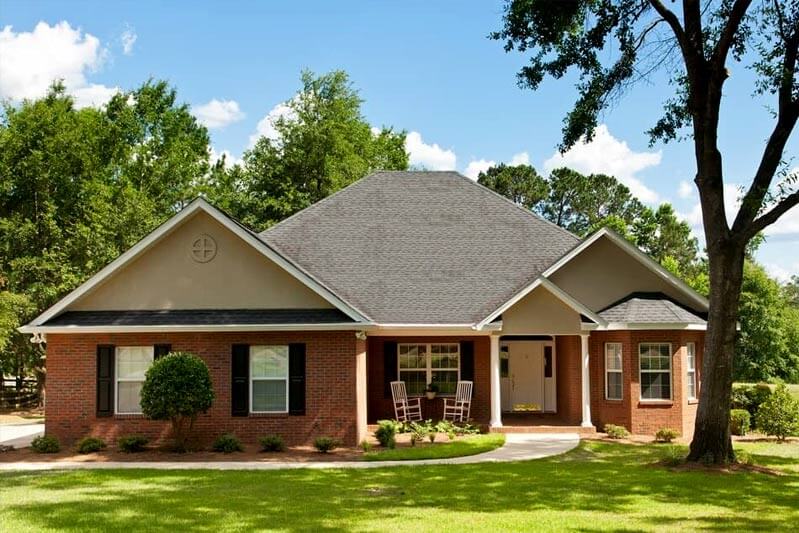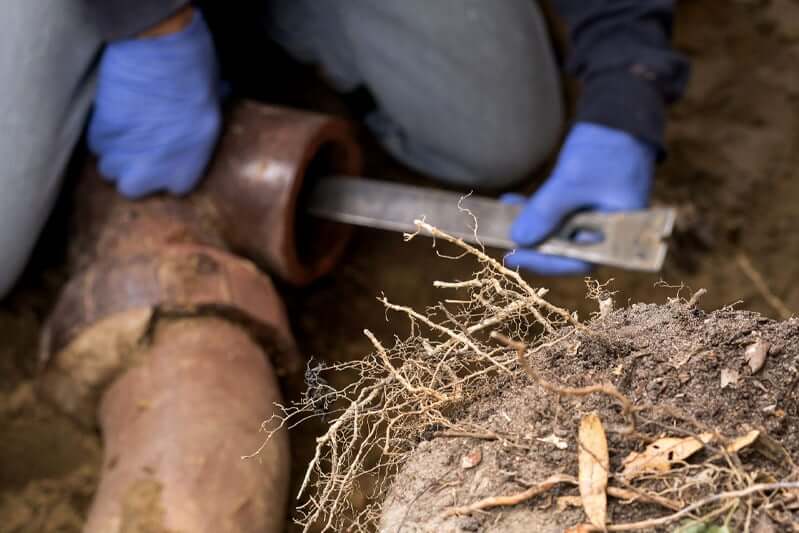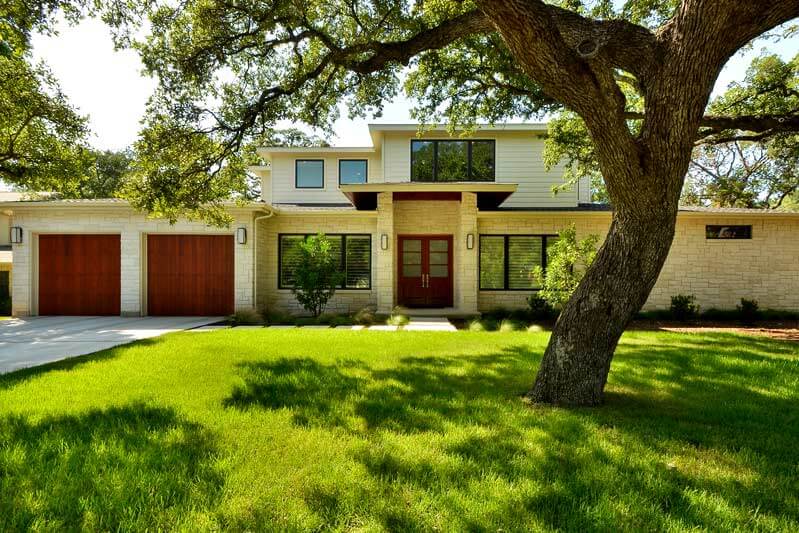Tree growth around your house has its benefits unless the roots start growing under the house. Tree roots can damage the plumbing system, foundation, and even driveways and sidewalks. If you already have this problem with your home, knowing how to stop the further growth of the tree roots without killing the tree is crucial.
You can put a protective barrier around the foundation of your house or reinforce the walls and foundation of the basement if any. You can also opt to cut the invading roots or entirely remove the tree.
Trimming or cutting the invasive roots may not be ideal for stopping them from growing under the house. The roots can still cause damage without touching or reaching the foundation or walls under the house. They can do this by using all the moisture in the soil surrounding the foundation, leading to damage or destructive cracks.

Most people think that trimming or cutting invasive roots is a good remedy, but it may be more dangerous than you think. The tree is highly likely to die when you cut the roots. And if you are not careful with the exercise, it may lead to more damage than envisaged.
The weakness or death of the tree can cause it to fall on the house or lead to a termite infestation. And if the trimming does not work, the tree may recover and continue to damage the house.
Here are better options to consider before trimming the roots or removing the tree.
Using protective barriers
Protective barriers are one of the safest and surest ways to stop tree roots from growing under and damaging your house. It helps if you reinforce the barriers to prevent the roots from growing around them.
You will find these barriers in hardware stores. You can also ask a tree removal expert for the best barriers for stopping the spread of tree roots under your house. They are in the best position to recommend the most suitable option for your specific needs.
How do the barriers work?
The barriers go into the ground around your house and surround it. They act as a shield to keep the invading roots from going further. That way, the roots can move in another direction in search of nutrients and water. The barriers must be deeper than the house’s foundations to be effective.
Otherwise, the roots may find their way under them and invade the foundation. The deeper you can install them, the more effective they are so that roots do not have easy access to the house.
It is important to note that these barriers only work if you first remove the invading roots or install them before the roots get too close. Also, they keep new roots from growing under the house.
Reinforcing the foundation
Another step in preventing tree roots from growing under your house is reinforcing the foundation. You can opt to use the reinforcements alone or together with the barriers. Reinforcing the foundation makes it stronger and prevents roots from damaging it.
However, if you reinforce the foundation after putting the barriers, as explained earlier, you have double protection. Even if the roots find their way around the barriers or break through them, the reinforced walls and foundations keep them from destroying the foundation.
Cutting the tree roots
You need to dig a trench along the foundation to reach the invading roots, even if they are visible. Go as deep as 18-20 inches. The point is to reach the roots without hindrance and cut those damaging the house.
Once you have access to them, cut every visible root in the area and remove the ends if possible. This is the ideal time to install barriers in the trench along the foundation.
Note that cutting the tree roots must be done safely. Before cutting them, check to see that they have grown more than fifteen feet from the tree’s main trunk. Also, you must not cut more than 25% of the roots of any tree, so you do not kill the tree.
If you are unsure of correctly checking the roots and the ones to cut, get a professional tree removal service near you for further assistance.
Removing the tree
The last option is to remove the tree from around your house. If none of the above remedies stop the roots from growing under your house and you see damage to the foundation and walls, it may be best to cut the tree. The same applies if cutting or trimming the roots may affect more than 25% of the root system.
If the tree is an oak maple, which usually grows big, has far-reaching roots, and is growing 30 feet or less from your house, it may be best to cut it. This is especially true if more than 25% of the root system is causing damage. The same applies if the tree is a smaller species and is growing 15 feet or less from the house.
Trimming a tree’s roots too close to the trunk can cause it to become sickly or die. An arborist is in the best position to remove the tree.
When tree roots threaten the house’s plumbing system
Tree roots typically spread in all directions because of water. When a tree needs to find new water sources, its roots reach out to any source, no matter where it is, as long as they can reach it. And once they find a source, they aggressively grow in that area.
One such place is the plumbing under your house; tree roots can damage it. The same is true for the septic system. Therefore, try any or all of the following if tree roots are growing close to the plumbing or septic system.

Use baking soda and salt
First, boil some water. And while it is boiling, mix a cup of salt into a cup of baking soda, and add a cup of boiling water. Prepare the mixture close to a ground-floor toilet or sink because it tends to foam and is most potent at that point. Pour it into the toilet and quickly flush it.
The salt in the mixture will attack and kill the invasive roots, while the baking soda transports it quickly throughout the plumbing pipes. Inspecting the effect of the natural root killer is crucial so that you know when and how frequently you should repeat the process. Also, the extent of the damage or spread is vital in how often you repeat it.
Use dichlobenil
Dichlobenil is a foaming herbicide that kills tree roots. You can pour it into a septic cleanout pipe or a ground-floor toilet and flush it. The herbicide attacks and kills tree roots already in the septic or plumbing system.
The dead roots do not clog the system because the bacteria already in the pipes encourage decomposition and easy flushing. It is crucial to follow the instructions on the herbicide label to avoid causing undue damage to other roots if applicable.
Use copper sulfate
Copper sulfate is an excellent alternative to Dichlobenil, and you can also flush it down a toilet or pour it directly into a septic system. It is highly potent and quickly kills invasive roots. However, its toxicity can be a danger to other roots if you pour it directly on them because it may affect surrounding roots and kill them.
It is important to note that these root killers work best if you give a 12-hour gap between one toilet flush and another. Flushing the toilet or running lots of water down the sink may reduce their effectiveness. Therefore, it may be best to use them when you are not at home or when going to bed to give them time to work.
Building a house close to trees
Building your house too close to growing or big trees exposes its foundation to damage when the roots search for water. If you are considering erecting a building, it is crucial to check the land to ensure there are no trees with the potential to invade the foundation with their roots.
You may want to consider whether or not the foundation is moveable if you are already building too close to such a tree. However, moving it is usually near impossible, so consider if you want to preserve the tree. An arborist can help you determine the best ways to preserve the tree while building without fear of damage to the foundation or walls in the long run.
You also can kill the tree, especially if it is a large one with no other options. Leaving such a tree on your property, if it is a small yard, may eventually damage the house. Cutting or trimming far from the trunk is viable only if it effectively curbs root growth under the house. Otherwise, cut the tree to preserve your house in the long run.

Planting new trees
Avoid fast-growing trees if you want to plant new trees on your property. The reason is that their roots can become aggressive with time. Such trees include Silver Maples, Oaks, Hybrid Poplars, Willows, and Elms. Let an expert inspect your property to determine which tree works best without becoming a danger.



